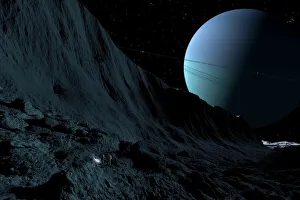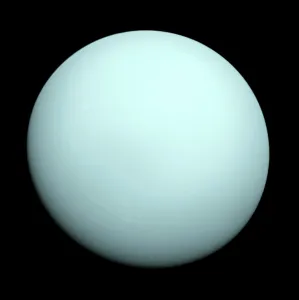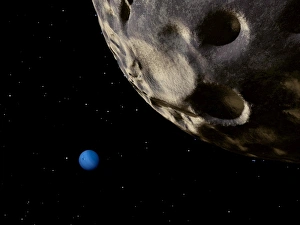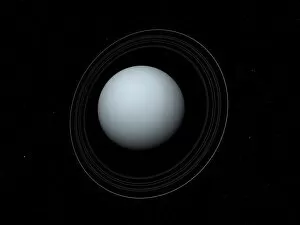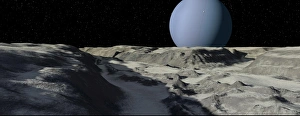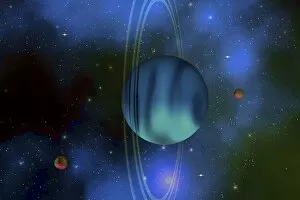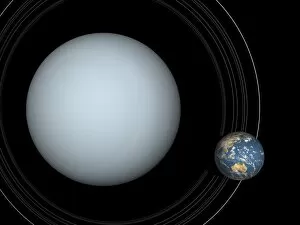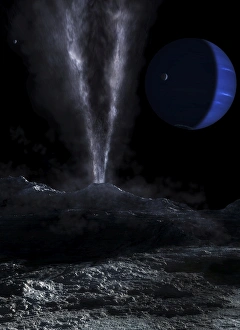Ice Giants Collection
Ice giants, the majestic and enigmatic celestial beings that reside in the outer reaches of our solar system
All Professionally Made to Order for Quick Shipping
Ice giants, the majestic and enigmatic celestial beings that reside in the outer reaches of our solar system. Among them, Uranus stands out with its peculiar features, captivating astronomers and space enthusiasts alike. One cannot help but be mesmerized by the gigantic scarp etched onto the surface of Miranda, one of Uranus' many moons. This awe-inspiring sight serves as a reminder of the immense forces at play in this distant realm. As we venture further into this icy wonderland, Neptune reveals itself from afar through the eyes of its tiny moon Nereid. The sheer vastness and beauty of this gas giant are truly breathtaking, leaving us humbled by its grandeur. Artists have envisioned these ice giants in all their glory - Neptune's azure hues swirling amidst turbulent storms; Uranus adorned with rings encircling its ethereal form. These concepts transport us to a world beyond imagination, where nature paints masterpieces on cosmic canvases. Uranus beckons us closer as we witness it through the lens of Ariel or Cordelia - two moons privileged enough to behold their parent planet up close. From their perspective, Uranus appears both serene and mysterious, shrouded in an otherworldly ambiance that captivates our senses. And then there is Triton – Neptune's largest moon – offering a front-row seat to observe its magnificent host planet. Artists conceptualize this extraordinary view: Triton gazing upon Neptune's vibrant blue atmosphere adorned with wisps of clouds dancing across its surface. These ice giants hold secrets yet to be fully unraveled; they challenge our understanding while igniting our curiosity about what lies beyond our familiar home. Their allure reminds us that even within our own cosmic neighborhood exists wonders waiting to be explored and understood. So let us continue marveling at these frozen behemoths as they grace our night sky – silent sentinels guarding mysteries untold amidst their frigid domains.

